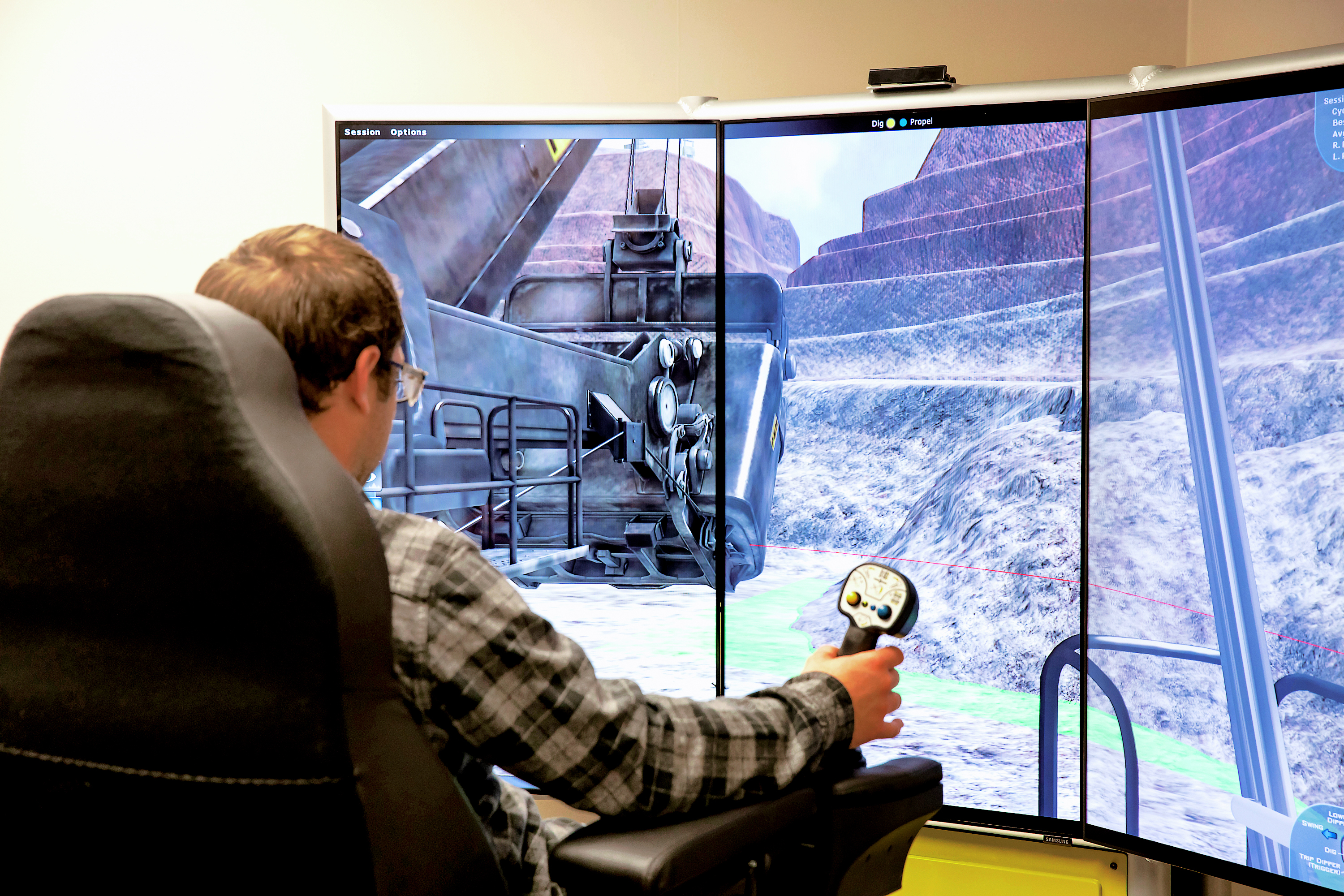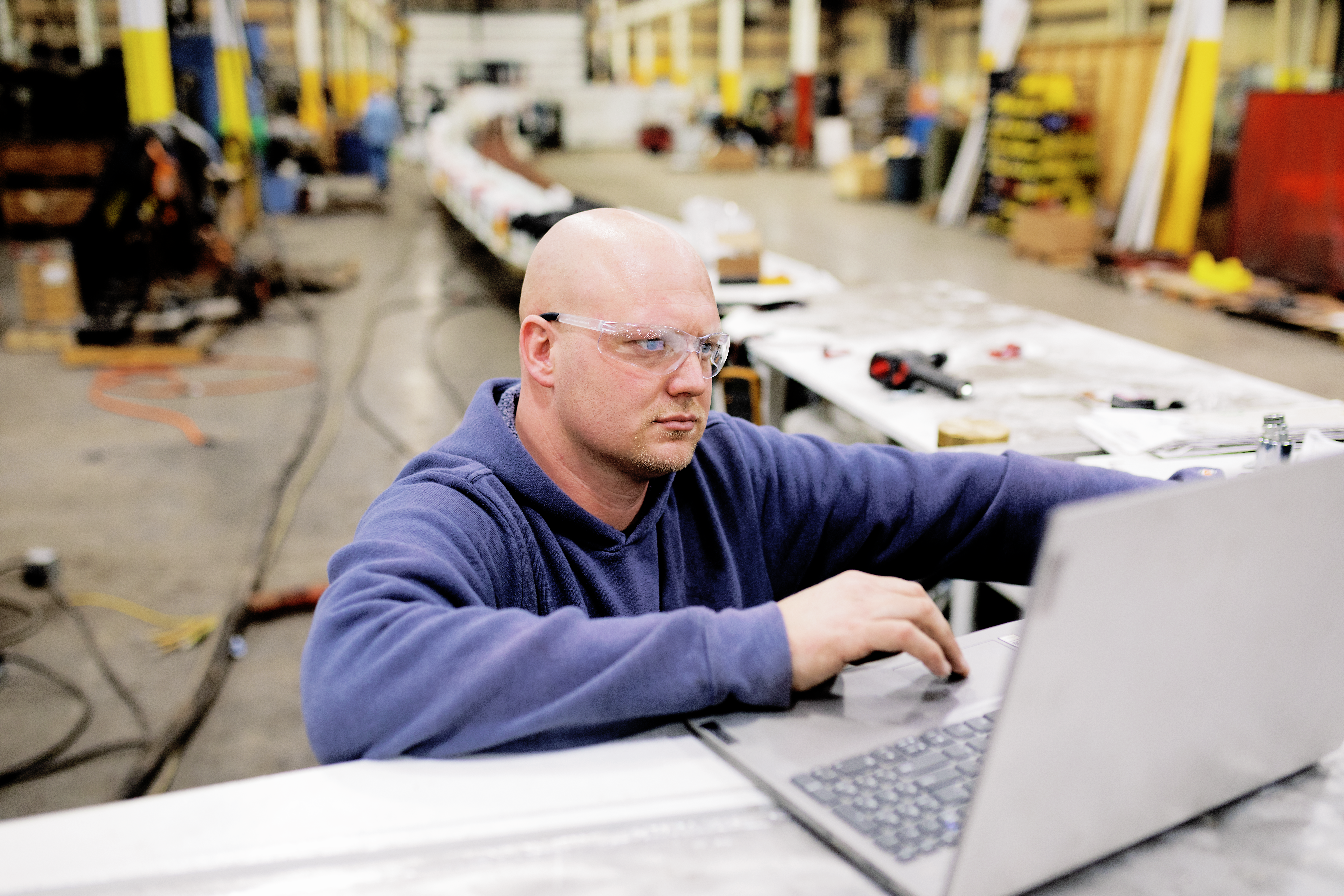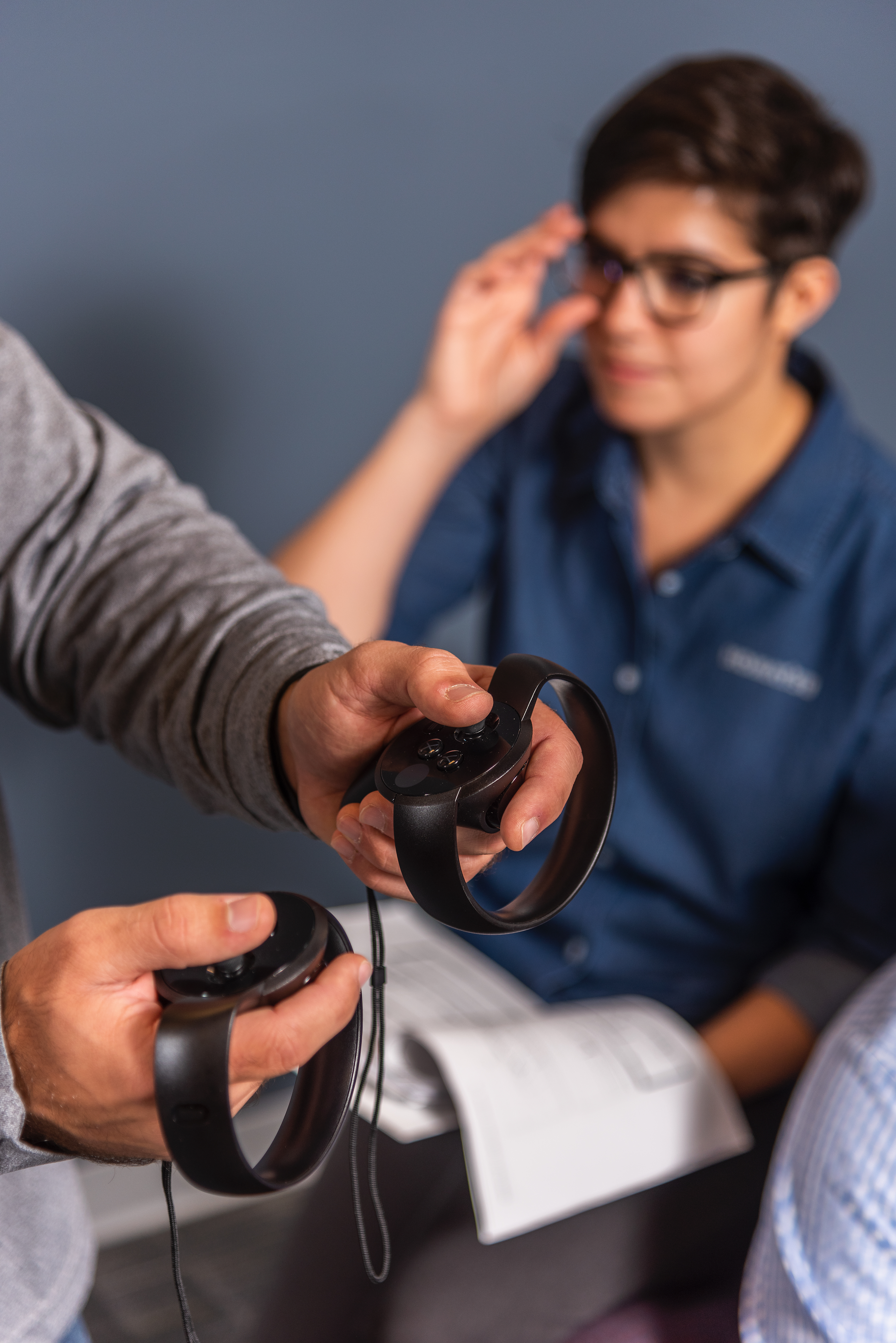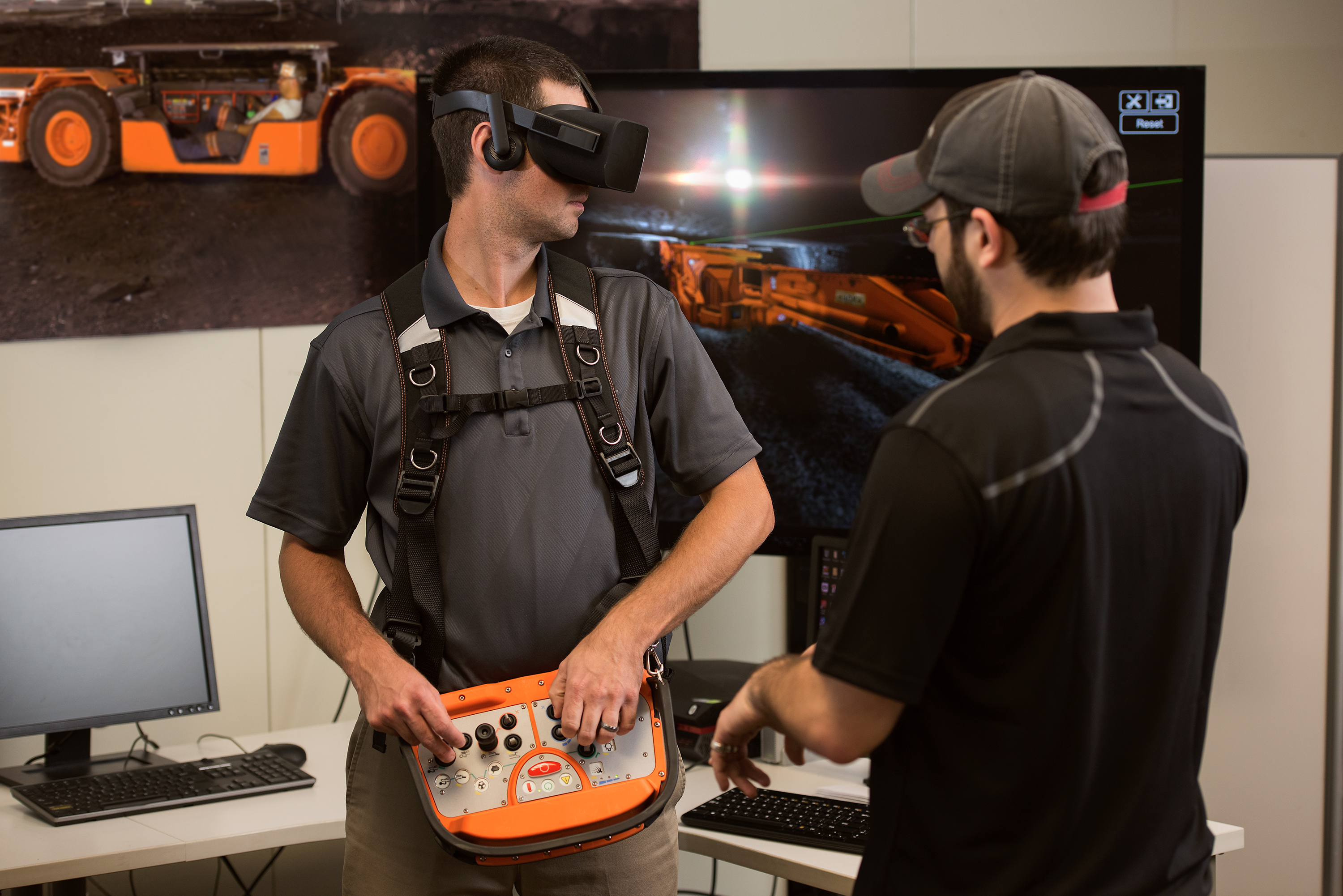2 min read
Komatsu named a Best of CES winner
- Press release,Construction,Company,Surface mining
9 min read

Hands-on training can be a great way to learn a new skill. However, it can also be a safety risk to have workers learning new tasks when they have little or no experience.
To limit these risks, more and more, contractors are turning to technology. Online training, simulators, artificial intelligence, virtual reality and other innovative methods allow new employees to get the training they need in a safe environment.
“Workplace injuries are costly and putting unskilled people in situations they are unfamiliar with increases risk,” said Bill Chimley, director, training and publications, Komatsu, North America Region. “Using today’s technology to build a knowledge base and skills through internet-based learning and simulated job site environments makes a great deal of sense.”
Online, computer learning

Universities developed online learning courses and degrees several years ago, allowing students to take classes at their own pace or within a certain timeframe. This reduced the costs associated with travel and being on campus. Over the past two years, the Covid-19 pandemic significantly increased the number of people turning to technology-based education.
“The growth has been pretty staggering,” said Anant Agarwal, founder and CEO of online learning platform edX, in an article for CNBC. “We saw a 15-fold, not 15%, a 15-fold increase in the number of new learners registering on edX during the month of April 2020. And in fact, the year through November 2020, compared to the year through November 2019, the number of new registrations on edX went up by 161%.”
Chimley said that before the pandemic, contractors were already seeking out more digital and online content because they saw the value of getting workers trained without the associated costs of sending them to classes away from the job site.
“A real advantage of online and computer-based modules is that they can be done practically anytime, from anywhere,” said Chimley. “Manufacturers have used these methods to help their distributors’ technicians build and advance their skills before they ever touch a machine. That can be beneficial for areas such as electrical systems so that they understand how those work and reduce the risk of shock.”
Chimley added, “Contractors want ways for their workers to get similar types of training when it comes to their operations, whether it’s a mechanic, an operator, a fleet manager or anyone else in their organization who has a desire to learn.”
Komatsu Academy
To help users get the technology-based learning they are seeking, Komatsu recently launched Komatsu Academy, a program designed to connect learners’ needs with training content designed for digital consumption.
“We’re building an online platform where users can access a wide variety of content that’s available at any time,” explained Chimley. “Let’s say you’re up late and want to learn about hydraulic systems. Obviously, that is an unscheduled time, and our trainers are not available, but Komatsu Academy is. You can log on, pull up the module or course you want to take, make a payment and get started.
“Eventually, we may see opportunities for operators to learn while they are in the cab in a non-operating environment,” he added. “For instance, they could access a video on how to more effectively move dirt and watch it on the monitor.”
In addition to standard educational courses from Komatsu experts, Chimley said content will include informational and how-to videos. Users can leave feedback, contribute content ideas and make suggestions for improvements or other ways to approach a subject.
“Building a learning community is one of our major goals,” Chimley emphasized. “Think about the knowledge that’s out there in the construction industry. Someone might suggest an idea that no one had thought of before; that sparks a discussion and leads to a better, safer way to do something.”
Wearables
Wearable devices continue to gain prominence, including those with RFID (radio frequency identification). They have mostly been used to monitor an employee’s whereabouts and send an alert if they enter a restricted or hazardous zone or have an accident. They can also be used to track hours worked.
 Wearable technology can help in many aspects of corporate training.
Wearable technology can help in many aspects of corporate training.
An article on eLearning Industry highlights some ways that wearable technology could be used in corporate training, including immersive task simulations, in-depth product knowledge training, instant access to manuals and tutorials, efficient use of company resources, real-time support resources and seamless collaboration in the workplace.
The article notes that "moment-of-need learning is crucial in corporate settings” because “it boosts performance, improves employee satisfaction and increases retention rates.” The article goes on to note that wearable technology can be invaluable as a corporate training tool. “While smartwatches and smart glasses, such as the Apple Watch and Google Glass, are known for their fitness tracking and personal assistant feature, they can also be used to create interactive training experiences.”
Google Glass as a wearable targeted to the general public was discontinued in 2015, but Google eventually shifted its focus toward business uses for the glasses. According to Chimley, wearables such as Google Glass can be effective in training as well as in helping operators – especially technicians — diagnose and resolve issues.
“You could pull up a manual and see it right there on the glasses while diagnosing or repairing a machine instead of having a physical manual laid out somewhere that you have to keep referring back to. That’s very inconvenient if you are looking under the hood or in a service door,” said Chimley. “If you are in the middle of making a repair or learning to operate a machine and not sure what the next step might be, you could use the glasses to talk with an expert who can help. That saves time, but it also keeps you from proceeding in a potentially unsafe environment. There is an obvious application there for training too.”
Headsets can still play a role
Two-way headsets have been around for many years. Komatsu trainers use them in conjunction with classroom and in-the-cab training, and they have been used even more in the past few months as trainers start getting back to job site visits.
“I’m not sure we will ever see the same amount of on-site training as before the pandemic, but there are certain situations where it’s necessary to have someone physically there,” said Chimley. “Fortunately, our trainers are very skilled operators. They know the layout of the machines and can visualize operation from anywhere. Headsets allow them to be outside, on the ground and communicate with operators.
“In real-time, they can tell trainees what they need to do to be more effective, such as spotting a truck differently,” he added. “Headsets are low-tech, but they still have a great deal of value in those situations where being on-site may be necessary.”
Simulators with VR, AR
If headsets are at the low-tech end of the training technology spectrum, then augmented reality (AR), and virtual reality (VR) are at the opposite. Both AR and VR can be used to help employees learn skills within a safe environment. For instance, before they are put in a real-world situation, a new excavator operator could simulate how to properly dig trenches and load trucks on a busy job site, or in confined spaces.
 Virtual reality tools can help train operators in a safe environment.
Virtual reality tools can help train operators in a safe environment.
Both AR and VR work by creating experiences that fuse the virtual world with the real one through enhanced 3D visuals. It’s easy to confuse the two, but there are notable differences.
According to an article from Tulane University, the distinctions between the two technologies comes down to the devices they require and the experience itself:
“While AR is gaining ground in construction training, most of it is currently done with virtual reality using simulators that model equipment operation,” said Chimley.
Simulators come in a variety of forms, including large-formats similar to those used in driver’s education classes. Recently, simulators with advanced technology such as virtual reality have become more common – and much smaller in size.
“They provide real-time feedback and scoring, so you know immediately what to improve upon.”
Relatively mobile and easy to set up, virtual reality simulators deliver effective and efficient hands-on training for operators to develop, practice and assess their skills in a more simulated, engaging working environment. Simulators come with 3D environments that give users realistic scenarios, including job site visibility. They also have real machine controls that give operators a true experience of running a machine.
Components of a typical simulator set up includes a virtual reality display (headset) and hardware, physical excavator joystick and pedal controls, a high-end personal computer, monitor, keyboard, mouse and headphones.
Virtual reality training simulators have training modules on topics such as:
“With relatively few components, today’s simulators are very portable and can be set up practically anywhere,” said Chimley. “Another real advantage is that you can set up multiple simulators at a site and train several people, so time is maximized. If training was done on a machine, you can only have one person in the cab at a time, and the rest of the operators are likely standing around watching.” Chimley noted, “Simulators are an area of growth for training, and that will only continue for the foreseeable future.”
The payoff is worth it
A blog post from Optimum Safety Management, demonstrates the costs associated with workplace injuries. With direct and indirect costs, a single incident could cost thousands or even hundreds of thousands of dollars.
“Incidents have financial impacts both in the short term with fines, and in the long term with higher EMRs (Experience Modification Rate) that lead to increased insurance premiums,” said Chimley. “Reducing the likelihood of injury is essential, and today’s training tools are a good way of doing that. While there is a cost to online training with simulators and other methods, the payoff is well worth it.”